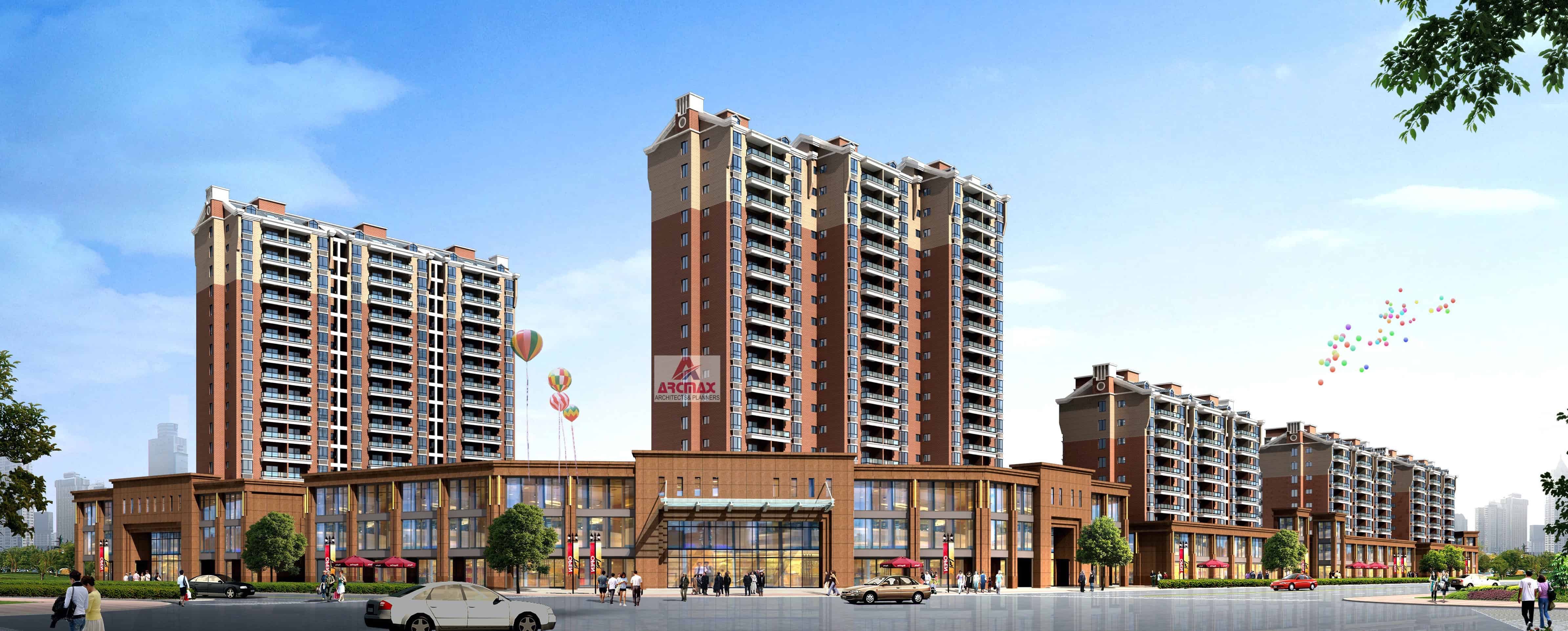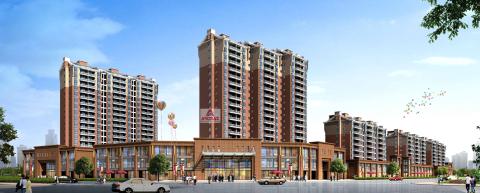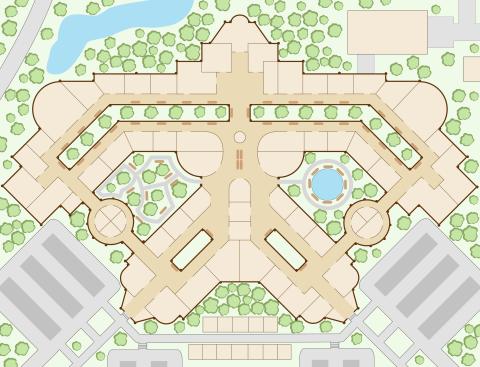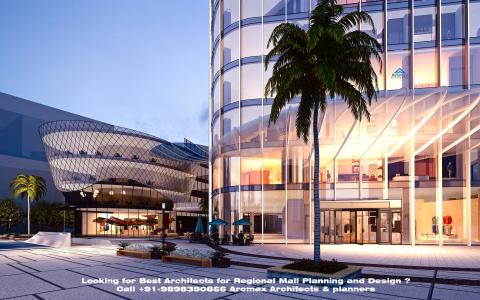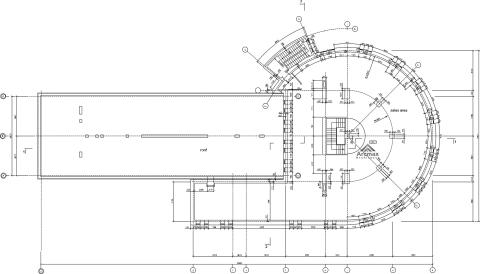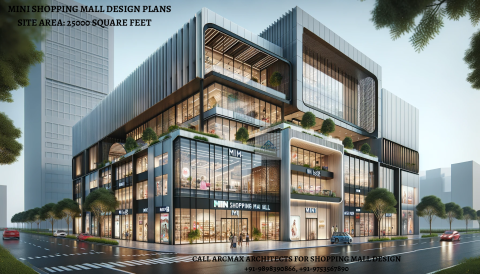
Key Specification Description
- Get Custom Convenience Center Design anywhere in the world
- Expertise Consultation for Every Projects
- Free Project Co-Ordination with Construction Company and Other International Consultants
- Free Alteration and additions in Convenience Center Design
- Free 1 Minute Flyby / 3D Video
Designing Convenience Centers with the Customer in Mind: Strategies for Success: Hire Arcmax Architects Today or call +91-9898390866
Welcome to our guide on designing convenience centers with the customer in mind. In this article, we will explore the strategies that can lead to success in creating customer-friendly spaces that enhance convenience and satisfaction.
Designing convenience centers requires careful consideration of the customer journey and experience. By understanding the needs, preferences, and behaviors of your target audience, you can create a space that not only meets their needs but also exceeds their expectations.
At Arcmax Architects & planners, we believe that convenience is key in today's fast-paced world. Our brand voice reflects this by focusing on simplicity, efficiency, and customer-centricity. We understand that customers value convenience above all else, and our article will provide valuable insights into creating convenience centers that align with their desires.
From optimizing layout and signage to implementing innovative technologies, we will cover a wide range of strategies to make your convenience center a destination of choice for busy customers. By incorporating thoughtful design elements and incorporating the latest industry trends, you can create a space that not only meets the basic needs of your customers but also surprises and delights them along the way.
Join us as we dive into the world of designing convenience centers with the customer in mind, and discover the strategies that can turn your center into a thriving hub of convenience and satisfaction.
Looking for Best architects for Convenience Center Design and Planning in India, USA and UK ? Hire Arcmax Architects today or call +91-9898390866
Understanding the concept of convenience centers
Convenience centers are retail spaces specifically designed to provide customers with easy access to a variety of products and services in one location. These centers typically house a mix of retailers, restaurants, and service providers, offering a one-stop destination for customers to fulfill their needs.
To create successful convenience centers, it is crucial to understand the core concept behind them. Convenience centers aim to save customers time and effort by providing a convenient and accessible shopping experience. By consolidating a range of products and services in one place, customers can easily find what they need without the hassle of visiting multiple locations.
Convenience centers also serve as social hubs, where customers can meet friends, grab a quick bite to eat, or simply enjoy their surroundings. The key to designing successful convenience centers lies in creating an environment that caters to the diverse needs and preferences of customers, while also maximizing convenience and efficiency.
Importance of customer-centric design in convenience centers
Customer-centric design is essential in convenience centers as it ensures that the entire space is tailored to meet the specific needs and desires of the target audience. By putting the customer at the center of the design process, convenience centers can create an experience that resonates with their target market and keeps them coming back for more.
When designing a convenience center, it is important to conduct thorough research and analysis of the target audience. This includes understanding their demographics, shopping behaviors, and preferences. By gaining insights into their needs and desires, convenience center designers can create a space that is both visually appealing and functionally efficient.
Customer-centric design goes beyond aesthetics and involves creating an environment that is intuitive, accessible, and enjoyable to navigate. From the moment customers enter the convenience center to the time they leave, every aspect of their experience should be carefully crafted to enhance convenience and satisfaction.
Key elements of customer-centric design
Customer-centric design in convenience centers involves several key elements that work together to create a seamless and enjoyable experience for customers. These elements include layout and flow, signage and wayfinding, technology integration, and sustainability considerations.
Layout and flow
The layout and flow of a convenience center play a crucial role in determining how customers navigate the space and interact with the various retailers and services. An effective layout should be intuitive and easy to navigate, allowing customers to move seamlessly from one area to another.
One important aspect of layout design is zoning. By grouping related products and services together, convenience centers can create a sense of coherence and make it easier for customers to find what they need. For example, placing food and beverage outlets near seating areas can encourage customers to stay longer and enjoy their meals.
In addition to zoning, the placement of amenities such as restrooms, ATMs, and parking areas should be strategically planned to enhance convenience. By placing these amenities in easily accessible locations, customers can easily fulfill their basic needs without interrupting their shopping experience.
Signage and wayfinding strategies
Clear and effective signage is essential in guiding customers through the convenience center and helping them find their desired destinations. Proper signage should be visible, easy to read, and provide clear directions to different areas within the center.
Wayfinding strategies can also include the use of digital technologies such as interactive maps and mobile apps. These technologies can provide real-time information on store locations, promotions, and events, making it easier for customers to navigate the convenience center and find what they need.
Technology integration
Incorporating innovative technologies into convenience centers can greatly enhance the customer experience. For example, self-checkout kiosks can reduce waiting times at the cashier, while mobile payment options can streamline the payment process and eliminate the need for cash or physical cards.
Digital displays and interactive touchscreens can also be used to provide customers with real-time information on promotions, product details, and upcoming events. These technologies not only enhance convenience but also create a more engaging and interactive shopping experience.
Sustainability and eco-friendly design considerations
In today's environmentally conscious world, sustainability is an important consideration in convenience center design. By incorporating eco-friendly design elements, such as energy-efficient lighting, recycling stations, and green spaces, convenience centers can attract environmentally conscious customers and contribute to a greener future.
Sustainability can also extend to the selection of retailers and service providers within the convenience center. By prioritizing businesses that align with sustainable practices, convenience centers can create a cohesive and eco-friendly environment that resonates with customers who value sustainability.
Analyzing customer behavior and preferences
Understanding customer behavior and preferences is paramount in designing convenience centers that meet their needs and exceed their expectations. By conducting thorough market research and analysis, convenience center designers can gain valuable insights into customer demographics, shopping habits, and preferences.
Market research can include surveys, focus groups, and observational studies to gather data on customer preferences, such as preferred store layouts, product assortment, and pricing strategies. This information can then be used to inform the design of the convenience center and ensure that it aligns with customer expectations.
By analyzing customer behavior, convenience centers can also identify areas for improvement and make data-driven decisions to optimize the customer experience. For example, if customer surveys indicate a preference for self-checkout options, convenience centers can invest in self-service kiosks to enhance convenience and reduce waiting times.
Creating a seamless customer journey
A seamless customer journey is essential in convenience centers as it ensures that customers can easily navigate the space and find what they need. From the moment customers enter the convenience center to the time they leave, every touchpoint should be carefully designed to enhance convenience and satisfaction.
The customer journey begins with the exterior of the convenience center, where factors such as parking availability, signage, and accessibility can influence the first impression. Clear and visible entrance points and welcoming exteriors can entice customers to enter the convenience center and explore what it has to offer.
Once inside, the layout and flow of the convenience center should guide customers naturally through the various areas and retailers. Clear signage and wayfinding strategies should be implemented to ensure that customers can easily find their desired destinations and navigate the space without confusion.
Throughout the customer journey, convenience centers should also prioritize customer comfort and convenience. This includes providing ample seating areas, clean and well-maintained facilities, and easy access to amenities such as restrooms and ATMs.
By creating a seamless customer journey, convenience centers can enhance customer satisfaction, encourage repeat visits, and foster a positive reputation among customers.
Incorporating technology to enhance convenience
Technology plays a significant role in enhancing convenience in convenience centers. By leveraging the latest innovations, convenience centers can streamline processes, improve efficiency, and create a more engaging and interactive experience for customers.
One way technology can enhance convenience is through mobile apps. Convenience centers can develop their own apps that provide customers with real-time information on promotions, store locations, and special events. These apps can also enable mobile payment options, allowing customers to make purchases without the need for physical cards or cash.
In addition to mobile apps, convenience centers can also utilize digital signage and interactive displays to provide customers with relevant information and engage them in a more immersive shopping experience. For example, digital displays can showcase promotions, upcoming events, and product details, while interactive touchscreens can allow customers to explore product features and make informed purchasing decisions.
Technologies such as RFID (Radio Frequency Identification) and NFC (Near Field Communication) can also be implemented to enhance convenience. These technologies enable customers to quickly and easily locate products, access additional product information, and make purchases with a simple tap or scan.
By incorporating technology into convenience centers, retailers can not only enhance convenience but also gather valuable data on customer preferences and behaviors, enabling them to further optimize the customer experience.
Effective signage and wayfinding strategies
Clear and effective signage is crucial in guiding customers through the convenience center and helping them find their desired destinations. Proper signage should be visible, easy to read, and provide clear directions to different areas within the center.
Signage should be strategically placed at key decision points, such as entrances, intersections, and elevator or escalator areas. This ensures that customers can easily navigate the convenience center and find what they need without confusion.
To enhance convenience further, convenience centers can also utilize digital signage and interactive displays. Digital signage allows for dynamic content that can be easily updated to provide real-time information on promotions, events, and store locations. Interactive displays can engage customers by allowing them to explore different areas within the convenience center and access additional product information.
Wayfinding strategies can also extend to the use of mobile apps or interactive maps that provide customers with real-time directions and information. By integrating digital technologies with traditional signage, convenience centers can create a seamless and intuitive navigation experience for customers.
Optimizing layout and space utilization
An optimized layout and efficient space utilization are essential in maximizing convenience and ensuring a smooth flow of customers through the convenience center. By carefully planning the layout and use of space, convenience centers can create an environment that is visually appealing, functional, and easy to navigate.
One important aspect of layout design is zoning. Convenience centers can group related products and services together to create a sense of coherence and make it easier for customers to find what they need. For example, placing food and beverage outlets near seating areas can encourage customers to stay longer and enjoy their meals.
Efficient space utilization also involves careful consideration of the size and placement of aisles, displays, and seating areas. Aisles should be wide enough to accommodate customer traffic and allow for easy movement, while displays and seating areas should be strategically placed to enhance visibility and accessibility.
By optimizing layout and space utilization, convenience centers can create an environment that maximizes convenience and efficiency, ultimately enhancing the overall customer experience.
Sustainability and eco-friendly design considerations
Sustainability is an important consideration in convenience center design, as more customers are becoming environmentally conscious and actively seeking businesses that prioritize sustainability. By incorporating eco-friendly design elements, convenience centers can attract environmentally conscious customers and contribute to a greener future.
One way to promote sustainability is through energy-efficient lighting. By utilizing LED lights and motion sensors, convenience centers can reduce energy consumption and lower their carbon footprint. Natural lighting can also be maximized through the use of skylights and large windows, reducing the need for artificial lighting during the day.
Recycling stations can be strategically placed throughout the convenience center to encourage customers to dispose of waste responsibly. These stations should be clearly labeled and easily accessible, making it convenient for customers to recycle their waste while shopping.
Incorporating green spaces and outdoor seating areas can also contribute to a sustainable and eco-friendly environment. These spaces not only provide customers with a place to relax and enjoy their surroundings but also contribute to improved air quality and a sense of well-being.
By prioritizing sustainability in convenience center design, retailers can attract environmentally conscious customers and create a positive brand image that aligns with customer values.
Case studies of successful customer-centric convenience centers
To illustrate the strategies discussed in this article, let's explore some real-world examples of successful customer-centric convenience centers.
One example is the Time Square Shopping Mall in Hong Kong, which focuses on creating a seamless and enjoyable shopping experience for customers. The mall features a well-designed layout that is easy to navigate, with clear signage and wayfinding strategies. It also incorporates innovative technologies, such as interactive touchscreens and mobile apps, to enhance convenience and engage customers.
Another example is the Mall of America in the United States, which prioritizes customer comfort and convenience. The mall offers ample seating areas, clean and well-maintained facilities, and easy access to amenities such as restrooms and ATMs. It also provides a wide range of services, from personal shoppers to stroller rentals, to cater to the diverse needs of customers.
By studying successful convenience centers like these, designers can gain valuable insights and inspiration for creating their own customer-centric spaces that prioritize convenience and satisfaction.
Best architects in india for Convenience Center Design,Hire Best architects in india for Convenience Center Design,Best architects in United states for Convenience Center Design,Best architects in United kingdom for Convenience Center Design,Best architects in Canada for Convenience Center Design,Best architects in South africa for Convenience Center Design,Best architects in africa for Convenience Center Design,Convenience Center Design and planning,Best architects in United states for Convenience Center Design and planning,Best architects in United Kingdom for Convenience Center Design and planning,Best architects in Dubai for Convenience Center Design and planning,Convenience Center Design


